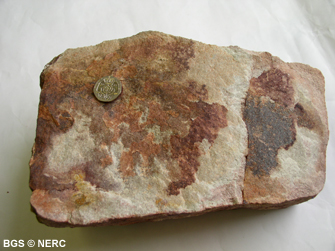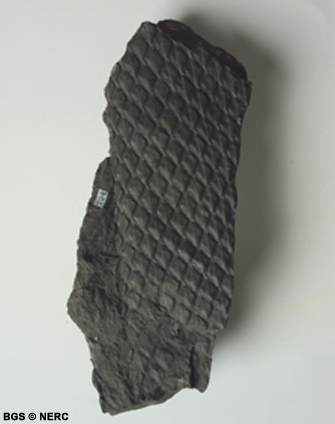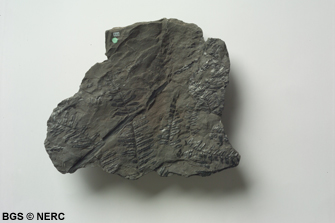
The rocks of Mendip
Silurian | Devonian | Lower Carboniferous | Upper Carboniferous | Triassic | Lower to Middle Jurassic
Upper Carboniferous rocks (327 to 299 million years ago)
At the beginning of the late Carboniferous the growth of the carbonate ramp that developed during the lower Carboniferous in the Mendip region was terminated by the southward spread of deltaic sandstones. Lush vegetation, comprising forests of giant tree ferns, club mosses and horsetails, colonised the delta, the rotted remains of which formed thick peat layers that were eventually transformed into coal. These events are reflected in the late Carboniferous rocks of the Mendips, which comprise the Quartzitic Sandstone Formation overlain by the Coal Measures.

Quartzitic Sandstone Formation
The Quartzitic Sandstone Formation, 45–65 m thick across the Mendip area, comprises quartz-dominated sandstone, with thin bands of sandy fissile mudstone, fossil soils (palaeosols) and very thin coals. The succession reflects a major environmental change, as deltas built by southward flowing rivers from a landmass further north covered the formerly shallow marine shelf of the Carboniferous Limestone. Fossils are rare, but the brachiopod Lingula mytilloides and the gastropod Bacunopsis have locally been recorded from a mudstone horizon.
Coal Measures
Fossil plant remains are locally abundant in the upper part of the Coal Measures, as well as rarer insect remains, the exquisitely preserved remains of which can be found amongst the spoil from old mine workings at Kilmersdon and Writhlington, near Radstock.

Only small areas of the Coal Measures are exposed at the surface in the Mendips, but information from nearby outcrops and boreholes shows that the succession can generally be subdivided into three broad intervals. The upper and lower intervals comprise dark non-marine mudstones with coal seams. The middle part of the succession comprises thick sandstones with few coal seams and small amounts of mudstone. These sandstones were deposited following a brief period of earth movements that marked an early stage in the uplift of a mountain chain to the south of the British Isles. Occasional thin marine mudstones with distinctive fossil assemblages ('marine bands') also occur sporadically through parts of the Coal Measures, representing periodic interruptions to the fresh-water coal swamp environment.

- Home
- Overview maps
- Locality
areas
- Cheddar Gorge
- Charterhouse
- Blackdown
- Burrington Combe
- Shipham & Rowberrow
- Crook Peak & Axbridge
- Banwell to Churchill
- Priddy
- Harptree & Smitham Hill
- Draycott & Westbury-sub-Mendip
- Wookey Hole & Ebbor Gorge
- Wells
- Great Elm & Vallis Vale
- Mells & the Wadbury Valley
- The Vobster area
- The Whatley area
- Torr Works & Asham Wood
- Beacon Hill
- Stoke St Michael & Oakhill
- Holwell & Nunney
- Shepton Mallet & Maesbury
- Gurney Slade & Emborough
- The Nettlebridge valley
- Geology
- Minerals and mines
- Quarrying
- Caves and karst
- Biodiversity
- Detailed site information
- Acknowledgements
- External links
- Search
- Site map